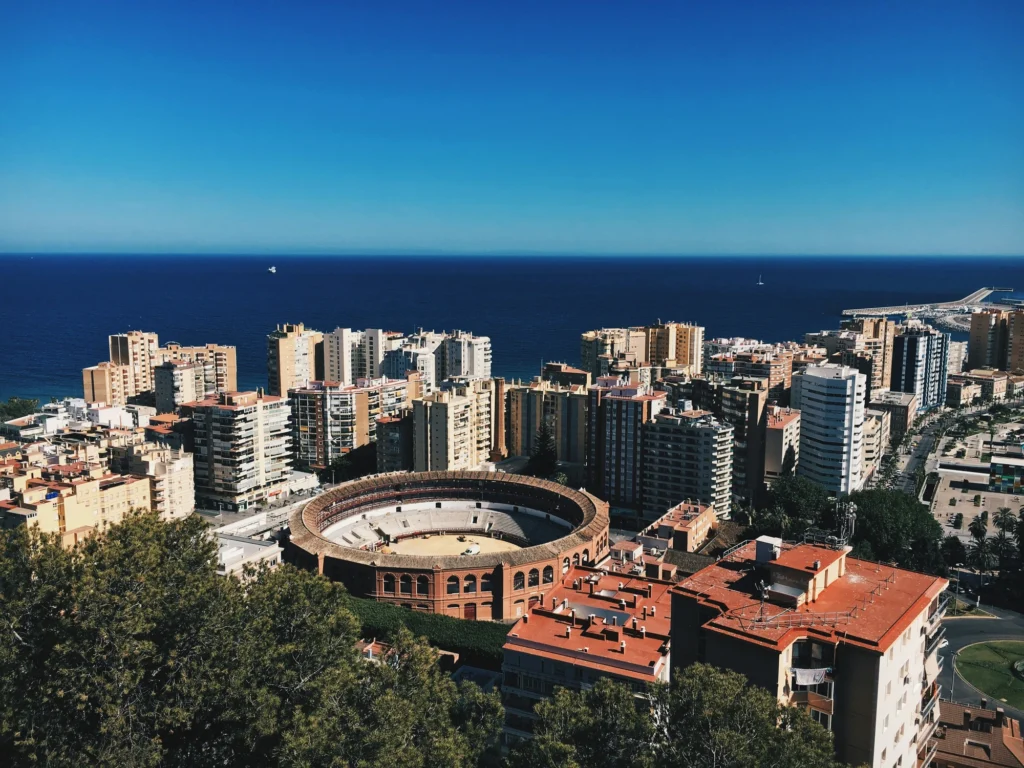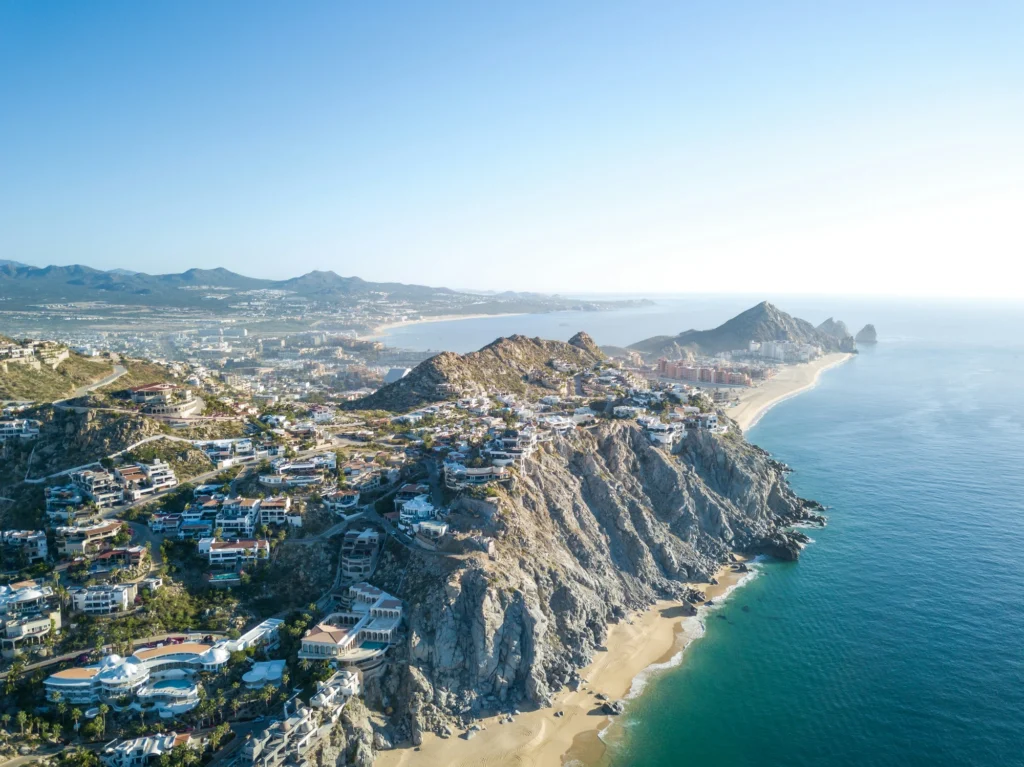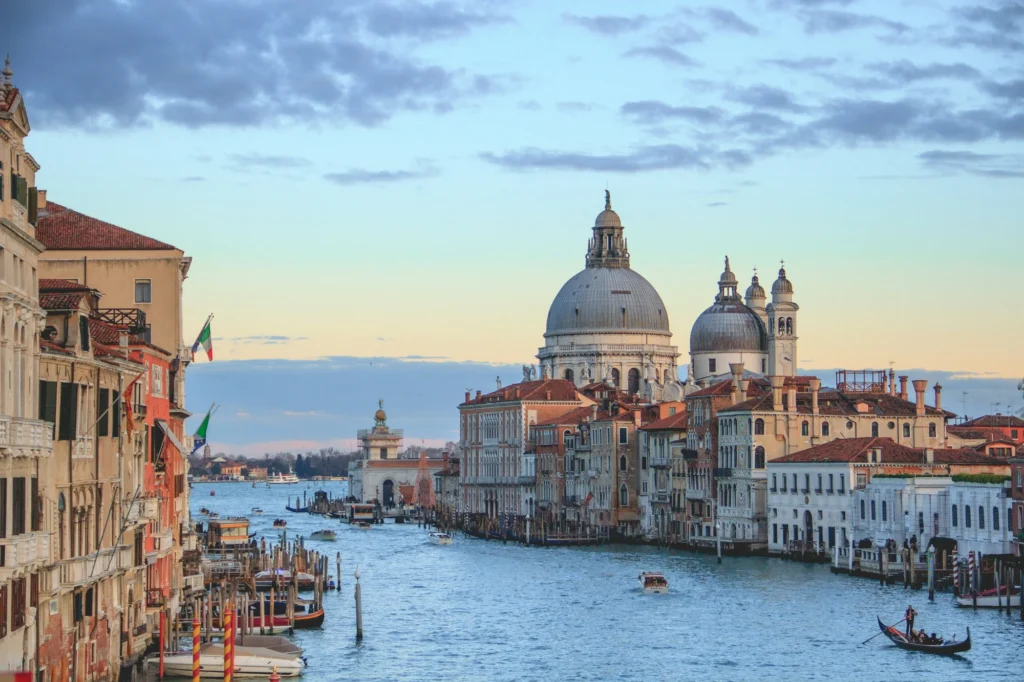Retiring in Florida might be tradition. But for millions of Americans, it’s become overpriced, overcrowded, and underwhelming.
What if you could retire 5-10 years earlier, live longer, and stretch your money further – in a country that’s warmer, safer, and frankly, a massive upgrade?
Below are the Freedom Files’ top 7 best countries for retirement in 2025, based on real expat experiences. These countries offer low taxes, affordable healthcare, and retirement visas designed for Americans. And #1 on this list? Most people don’t even know it’s one of the most retiree-friendly destinations on Earth.
Let’s count them down.
Or watch the video here instead:
#7: Thailand
If you dream in color, retiring to Thailand has probably crossed your mind. For Americans looking to retire overseas, Thailand can deliver a cost-effective luxury lifestyle, depending on your destination.
Cities like Chiang Mai in the mountainous north are legendary among expats for their culture and affordability. For around US$2,000 per month, you can live well. That includes rent, transportation, food, travel, and yes, even a housekeeper.
If you prefer more action, Bangkok is your spot. The cosmopolitan city full of skyscrapers, rooftop bars, and Michelin-starred restaurants should be on everyone’s bucket list. Expect to pay a bit more (US$3,000-US$4,000 per month at the low end) for the full experience and big city conveniences.

Thailand Retirement Visas
Thailand has a menu of retirement visas tailored to different levels of wealth and flexibility:
Designed for those 50+ years of age, the Non-Immigrant O Retirement Visa is Thailand’s most accessible retirement visa. You’ll need to prove US$2,000 in monthly pension or passive income or US$24,000 in bank savings.
The catch? It involves a multistep process: Apply from the US or wherever you’re located, land in Thailand on a 90-day visa, then convert to the full, one-year, renewable OA visa.
Bureaucratic? Yes. But doable? Absolutely.
For those willing to pay for ease, the Privilege Visa (formerly Elite Visa) is your route to Thai residency. Starting at US$25,000, you can secure 5 to 15 years of renewable stay – complete with airport perks, concierge services, and streamlined renewals.
The newer, 10-year LTR (Long-Term Resident) Visa aims at affluent expats and offers a key benefit: A tax exemption on foreign income, provided you don’t remit funds during the same year you earned them.
Thailand Taxes
Speaking of taxes, Thailand’s tax system can be friendly if you understand the game.
Foreign-sourced income is not taxed unless you bring it into Thailand during the same year it was earned. So if you receive US Social Security, pension payouts, or investment income, you can avoid Thai taxation simply by timing your transfers strategically.
It’s a legal and widely used method to reduce your global tax burden. Work with a cross-border tax advisor like the Freedom Files and you can keep more of what you earn and spend it more wisely than the government would.

Downsides of Retiring to Thailand
Thailand ranks #7 on our list of best countries for retirement, but a few key factors hold it back from ranking even higher.
Bureaucracy moves at its own pace. You’ll need patience (and sometimes a local Thai team like the Freedom Files expatriation experts) to navigate the immigration, tax planning, and relocation process. Plus, Thai policy changes are abrupt without much of a warning.
English is widely spoken in tourist areas, but outside the tourist belt, the language barrier is real. Additionally, the 12-hour time zone difference with the US makes family and affairs back home a bit more difficult to manage.
And finally, if you’re dreaming of planting long-term roots or obtaining a second citizenship, Thailand is not the place. Naturalization is notoriously difficult and rare.
Still, for thousands of Americans, Thailand delivers an almost unbeatable lifestyle ROI. If you’re wondering whether your financial setup could support a move like this, we’ve helped dozens of retirees run the numbers and make Thailand home. The lifestyle you want may be closer and more affordable than you think.
#6: Spain
A long-time favorite among US expats, Spain may call your name too. Thousands of Americans choose Spain to make their golden years truly golden.
Spain delivers on lifestyle – the narrow streets of Granada, fresh seafood in Valencia, or a late flamenco performance in Sevilla. That much is verifiable. But what surprises most is the manageable cost of living, especially outside of Madrid and Barcelona. Here’s how you too might make Spain your retirement home:
Spain Retirement Visa
Spain’s Non-Lucrative Visa is tailored for retirees living off passive income. To qualify for legal residency, you’ll need to show around US$30,000 in annual savings or income (about US$50,000 for a couple).
But don’t expect to breeze through the process though. Spanish bureaucracy is famously slow. Applications can drag on for months, even if you work with a consulate in your home country or a local immigration advisor like the Freedom Files. Once approved, however, the visa is renewable and can lead to one of the world’s most powerful passports after ten years.

Spain Taxes
Yes, there is a catch. Spain taxes global income, and the rates are not favorable. Someone’s got to pay for that top-ranked public healthcare system!
If you become a Spanish tax resident (i.e. spend more than 183 days in the country per year), you could pay up to 47% on your worldwide income, including your U.S. pension, Social Security, or investment income. To make matters worse, Spain’s tax break for foreign workers called the Beckham Law does not apply to retirees.
Despite all that bad news, the US-Spain tax treaty does provide relief from double taxation, meaning you won’t pay tax on the same income twice. But you will pay whichever country taxes it more. Don’t worry – The Freedom Files can walk you through a practical tax and cost of living plan.
If taxes are a major concern, Spain may not be your top pick. But if lifestyle and healthcare matter most, it still deserves a place on your shortlist.
Downsides of Retiring to Spain
Spain ranks #6 on our list of best countries for retirement, largely due to taxes and bureaucracy. You’ll want a Spanish-speaking team (like the Freedom Files relocation experts) on the ground to help you with immigration, housing, tax planning, and healthcare setup.
For the right retiree, especially those with dual citizenship ambitions or a strong love of European culture, Spain is one of the most rewarding places to spend your later years. Historic architecture, modern public services, and an unmatched lifestyle await.
On to Spain’s Iberian neighbor…
#5: Portugal
Portugal has been the darling of the expat world for over a decade for good reason. With its California-like coastline and weather, it’s one of the easiest places in Europe to settle into a familiar yet better lifestyle abroad.
But as we look at 2025, the question is: Does Portugal still live up to the hype? The answer has a few important caveats.
Portugal Retirement Visas
Portugal keeps it simple for retirees and remote income earners. The D7 Visa is the most common entry point for retirees. To qualify, you’ll need to show about US$1,000 per month in passive or retirement income (i.e. Social Security, rental income, dividends, or retirement accounts).
If you’re still working online, the similar D8 Digital Nomad Visa may be a better fit. While they do require stays of at least six months per year in Portugal (and therefore, tax residency), both visas grant a path to permanent residency or citizenship in just five years.
For those who want flexibility and don’t plan to live full-time in Portugal yet, the Golden Visa is a solid option. With a minimum stay requirement of just 7 days per year, a €500,000 investment in a Portuguese fund or a €250,000 cultural donation unlocks EU residency.
We broke down all these options in our How Do I Move to Portugal? post.
Portugal Taxes
Portugal once reigned as Europe’s top low-tax haven thanks to the Non-Habitual Resident (NHR) program. But that program is gone, and with it, Portugal’s tax appeal has cooled.
Still, a few tax exemptions remain, and careful planning can go a long way. Portugal taxes foreign income if you qualify as a resident, but a Portugal–US tax treaty helps prevent double taxation.
If you’re after minimal taxes, Portugal no longer tops the European charts. But if you’re drawn to Western Europe and can live with a moderate tax rate, it’s still very much in the running.

Downsides of Retiring to Portugal
The biggest challenge isn’t the paperwork or the taxes – It’s Portugal’s popularity. It’s not a secret anymore.
Lisbon, Porto, and the Algarve have seen price surges in both real estate and cost of living. Availability is tighter, and rental competition in desirable areas is fierce.
But those tradeoffs are a fair price to pay for one of Europe’s most livable, beautiful, and welcoming retirement destinations. Portugal consistently ranks among the world’s safest countries (#7 to be exact). And English is widely spoken in many areas, especially in places like Cascais, Faro, Lisbon, and the Algarve.
So, is Portugal the best country for retirement? Check out the Retire to Portugal page to learn more. If you’re after lifestyle, climate, safety, and a pathway to EU citizenship, it’s hard to ignore. But if low taxes are the make-or-break factor, keep scrolling for two more Mediterranean contenders ahead.
Up next: We head to Latin America with a destination that’s close to home, easy to settle into, and light on the tax burden. Mexico is calling.
#4: Mexico
If you’ve ever said, “I’d move abroad – but with frequent trips back home,” Mexico belongs on your shortlist.
For many Americans, it’s the easiest and most familiar international landing pad. Similar time zones, direct flights home, and a culture that feels both familiar (Walmart is prevalent throughout Mexico!) and different. Mexico has an option for every kind of retiree.
Mexico Retirement Visas
Mexico’s Temporary Resident Visa is one of the most accessible in the world. You can qualify by showing about US$4,000 in monthly income or US$75,000 in savings. This gets you up to one year of initial residency before renewing for three more years. Then, you can upgrade to permanent residency.
But if you have US$250,000 or more in savings, you can skip the temporary stage entirely and apply directly for Permanent Residency.
Both visas are processed through Mexican consulates in the US or abroad, and in most cases, approvals are straightforward. Discover all your residency options in our How Do I Move to Mexico? post.

Mexico Taxes
This is where Mexico really stands out. While not a territorial tax haven, the country does not tax foreign-sourced pensions or Social Security, and thanks to the US–Mexico tax treaty, you’re protected from double taxation.
That means, with the right structure, you could pay no Mexican taxes at all on your US-sourced income. It’s one of few places where legally reducing your tax burden can be this simple.
Just be sure to structure things properly from the start, especially if you plan to spend more than 183 days per year in the country and trigger tax residency. The Freedom Files can help.
Downsides of Retiring to Mexico
Like every destination, retiring to Mexico has tradeoffs. Safety and infrastructure vary dramatically depending on the region. While expat-favorite cities like San Miguel de Allende, Oaxaca, Puerto Vallarta, and parts of the Yucatán are generally safe and welcoming, other areas require more caution.
If you’re coming from the US, some day-to-day conveniences may feel like a step back. Roads, hospitals, or utilities may not always be as consistent as you’d like.
Still, it’s hard to beat Mexico’s geographic convenience, environmental diversity (your pick – beach or mountains?), and tax advantages. With thoughtful planning and local insight, retirees can build a more affordable, comfortable, and fulfilling life than back home.
If you’re looking for an affordable and flexible retirement option just a short flight from home, Mexico makes a compelling case.
Up next: We head farther south to a Latin American country with one of the world’s most generous retirement visas and a flat 0% tax rate on foreign income.
#2: Panama
For years, Panama has quietly built one of the world’s most retiree-friendly systems, designed for both the ultra-wealthy and ordinary retirees with a guaranteed income.
Panama Retirement Visas
Panama’s Pensionado Program is the gold standard for retirement visas. If you receive a guaranteed pension or Social Security income of at least US$1,000 per month, you qualify for permanent residency – no investment required.
It’s one of the easiest retirement visas on the planet to qualify for, and comes with sweet built-in perks: Pensionado visa holders receive discounts on flights, healthcare, utility bills, entertainment, and more across the country.
If you’re not drawing a pension but plan to buy property in Panama, the Friendly Nations Visa may be a better fit. A real estate purchase of US$200,000 or more will qualify you for immediate permanent residency as well.
Panama Taxes
Here’s where Panama really stands out. It’s a territorial tax country, meaning foreign-sourced income isn’t taxed. That includes your Social Security, pension income, retirement account withdrawals, dividends, rental income, and investment gains as long as they’re generated outside of Panama.
With the right plan, it’s possible to legally pay 0% tax on your retirement income while living in Panama full-time.
Panama also uses the US dollar, so you won’t deal with currency conversion headaches or exchange rate surprises. For Americans, that’s a big plus.

Downsides of Retiring to Panama
Panama delivers in many ways, but it’s not Europe. Panama City is modern and cosmopolitan, with excellent private healthcare, good travel connectivity across the world, international schools, and solid infrastructure. But beyond the capital, services and amenities can vary.
While there’s no shortage of white-sand beaches, mountain towns, and vacation escapes, day-to-day life outside the city can feel slower, less polished, and a bit more unpredictable. It’s Latin America after all.
If you’re drawn to walkable Old World charm, cobblestone streets, or café culture, the redeveloped and growing neighborhood of Casco Viejo in Panama City can scratch that itch.
If you’re looking for simplicity, financial efficiency, and a smooth landing into Latin American retirement, retiring to Panama is one of the smartest options on the table.
#2: Italy
Italy earns its silver medal for good reason. And it’s not just the cuisine, coastlines, or historic Roman charm.
Italy Retirement Visas
The most popular route for retirees in Italy is the Elective Residency Visa, designed specifically for those with passive income. To qualify, you’ll need to show around €31,000 in annual income as a single applicant or €62,000 per year for couples. That income can come from pensions, rental properties, dividends, or other non-employment sources.
You’ll also need to show proof of Italian housing, private health insurance, and apply through your local Italian consulate in the US (the Freedom Files can help you apply and relocate). The process is fast and absolutely doable for those who plan ahead.
For those looking to invest, Italy also offers a Golden Visa for a minimum investment of €250,000 in an Italian startup or €500,000 in an Italian company. With this Investor Visa, you can secure a residency permit and a path to citizenship.

Italy Taxes
Now for the part most people don’t expect: Italy (yes, Italy) offers one of the most attractive tax breaks for retirees in Europe. If you move to the more sparsely-populated Southern Italy, you can take advantage of a 10-year, renewable 7% flat tax on foreign retirement and passive income. That includes US Social Security, pensions, and your investment income.
Pair that with the fact that property in Southern Italy is incredibly cheap. Homes under $100,000 and for even €1 are common if you’re willing to renovate.
For retirees who want the European dream without the usual European tax bill, this is one of the continent’s best-kept secrets.
Downsides of Retiring to Italy
Italy’s biggest downside? The 7% flat tax regime is limited to Southern Italy. If you’ve always dreamed of retiring to Florence, Milan, or Venice, you won’t be eligible for the same tax treatment.
But once you’re in, the lifestyle wins are real – walkable towns, excellent cuisine and wine, access to quality healthcare, and a slower pace of life that encourages connection and purpose.
Italy checks nearly every box (beauty, culture, affordability, and tax perks) for American expat retirees. The only reason it’s not #1 best country for retirement? Those tax incentives aren’t available everywhere. If they were, Italy would be unbeatable.
Now for the gold medal, the #1 retirement destination for Americans in 2025:
#1: Greece
Greece takes the gold in 2025. For American retirees, the Balkan country offers an unbeatable combination of lifestyle, residency options, and tax incentives.
Greece Retirement Visas
The most accessible path for retirees in Greece is the Financially Independent Person (FIP) Visa. To qualify, you’ll need to show about €2,000 per month in passive income (or €24,000 per year). That’s it – Just proof of income and a willingness to spend at least 6 months per year in Greece.
Prefer to come and go as you please? Greece also offers a Golden Visa that grants immediate permanent residency starting at a €250,000 real estate investment and renovation.
Both visas are processed via Greek consulates abroad and are increasingly popular among US retirees looking for a Mediterranean base. If you’re interested in relocating and accessing Greece’s tax incentives outlined below, let the Freedom Files know.
Greece Taxes
Greece offers a flat 7% tax on foreign pensions and retirement income for 15 years. Even better? Unlike Italy’s 7% tax regime, you’re not limited to one region. You can live in Athens, Thessaloniki, or on a quiet Greek island in the Mediterranean and still benefit from the same flat tax.
Compared to the 30-40% most US citizens are paying, this is a huge win. Even better?
With careful planning and the right filing status, Greece is one of the most tax-efficient countries in Europe for retirees.

Downsides of Retiring to Greece
Greece is not without its tradeoffs. English is widely spoken in tourist zones, but outside of the city, the language barrier is real.
Infrastructure and bureaucracy can feel chaotic at times, especially if you’re used to smoother systems in Northern Europe or the US. But that’s a small price to pay for the rewards.
Retirees here talk about slowing down. The pace of life in Greece is deliberate, peaceful, and grounding.
So, is Greece your next chapter? If you’re looking for warmth, culture, beauty, and serious tax breaks, it just might be. That’s why Greece takes the top spot for best countries for retirement for Americans in 2025.
If you enjoyed this breakdown of the best countries for retirement overseas, you’ll love our analysis of more than 40 countries worldwide and all their residency paths, tax incentives, and quality of life metrics in the 162-page free guide Retire Earlier & Live Better Abroad: The Life-Changing Secrets Nobody Tells Americans. Download it for free here.


